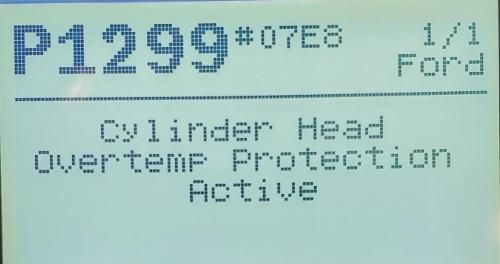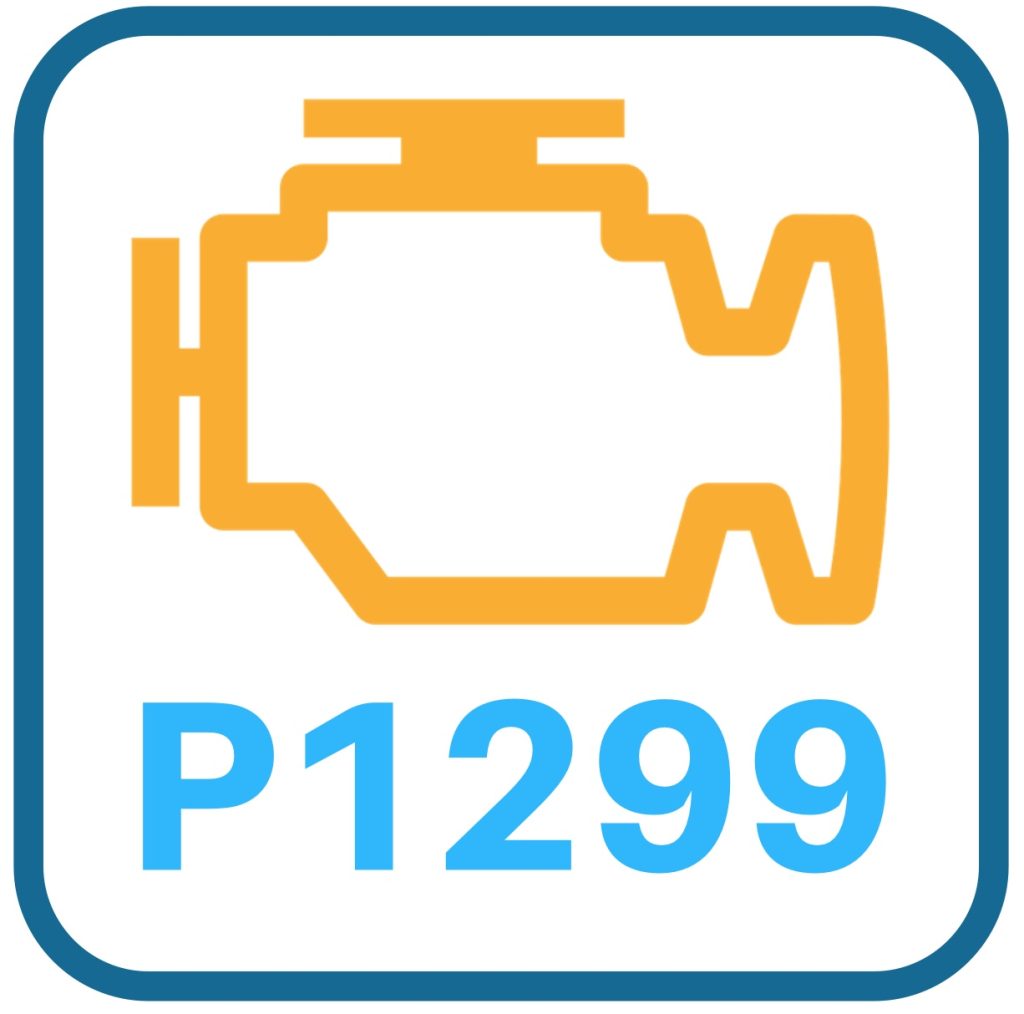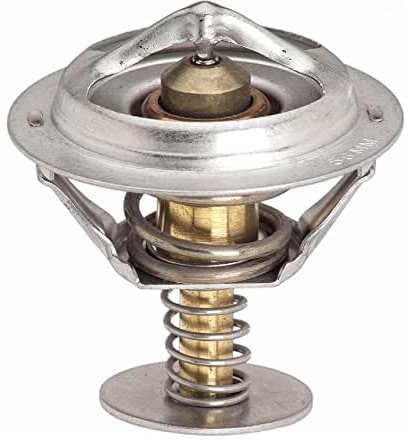
P1299 is a very common Ford-only trouble code. It indicates that your Ford Transit Connect has entered “Cylinder Head Overtemperature Protection”, which is a fail-safe mode designed to keep it from overheating so much that the engine gets damaged.
It is known to appear BEFORE the temp gauge or warning light alerts you to an overheating condition in your Transit Connect. Once it does, the temp gauge will be spiked, regardless of what the signal is from the engine coolant sensor (P1299 is determined by a cylinder head temp sensor that takes its reading directly from the metal of the head).
P1299 Definition: Cylinder Head Overtemperature Protection Active

Your Transit Connect’s cylinder head temperature sensor (CHT) measures the heat in the cylinder head and increases resistance as the temperature decreases and decreases resistance as the temperature increases.
It gets the reading directly from the metal in the head, and not the engine coolant, which allows the PCM to respond to a catastrophic cooling failure within enough time to (hopefully) save the engine from major damage.
When the resistance decreases enough to indicate that the engine is overheating, P1299 will be stored in your Ford Transit Connect’s PCM memory and the check engine light will come on. There will also likely be a warning in your vehicle’s information center.
It will also activate something called cylinder head overtemperature protection. This process deactivates some cylinders in the block and cuts fuel to them.
Here’s what can happen when this feature is activated:
- The A/C is deactivated to save strain on the engine/cooling system.
- Engine load is reduced.
- Temperature gauge is manually pegged.
- In V6 and V8 applications, some cylinders are deactivated. The combustion chamber acts as an air pump, and air cools the engine.
- The transmission will shift at different times, or enter limp mode.
- The PCM can fully shut your Transit Connect’s engine down.
P1299 Symptoms: Ford Transit Connect

There are almost always noticeable symptoms related to P1299. Most of them are the result of the cylinder head overtemperature protection mode. Your Transit Connect will probably be running rough, or not at all.
Ford Transit Connect P1299 Causes and Diagnosis

We are going to work off of the assumption that the CHT sensor is working accurately, for the time being. If you suspect the CHT (Your temp gauge never went up), you should jump to the section dealing with that below.
It’s really going to depend on whether or not the engine is obviously overheating as to where you start your diagnosis
Low Coolant
Low coolant is the most common reason that your Ford Transit Connect will overheat and throw P1299. If there’s coolant missing, it’s either leaking externally or internally It doesn’t just randomly disappear. Here are some of the common places coolant can leak from:
- A damaged radiator
- Cracked/bad radiator hose
- Bad radiator cap
- Thermostat housing damage
- Water pump gasket
There are a lot of places to look for a radiator leak. Make sure that you don’t take the radiator cap off when the engine is warm.
A slow leak can be more difficult to find than a quick leak since the coolant can evaporate before it has a chance to show itself.
If you are losing fluid, but can’t readily see the leak, UV dye is a great tool to locate it. It really works well. If you aren’t finding anything with the dye, take a look at the rear exhaust. Do you have a lot of white smoke? It could indicate that you have a blown head gasket.
Bad Radiator Fan
While going down the road the movement of air through your Transit Connect’s radiator will usually be enough to keep it cool, without the help of the fan. It’s when you are hardly moving that you will notice a radiator fan not working.
If you have a temperature gauge, you’ll notice that the temp will usually cool down when you get onto the highway and get moving into clean air. When the cooling system itself is bad, usually the opposite will happen.
Bad Thermostat

One of the most common reasons that a vehicle overheats is a bad thermostat. If the radiator overflow is full (and your radiator fan is kicking on), it is very likely that a bad thermostat or bad water pump is causing it to overheat.
Of these two, the thermostat fails more often than the water pump. It’s also much more affordable and easier to get to in almost all cases.
Bad Water Pump
Your Ford Transit Connect’s water pump is driven by the serpentine belt attached to the engine. Has your belt been squeaking when you startup, or when you are on the road? That can be an indication that it is bad.
When your water pump does go bad, it will often leak water. Or it’ll make a grating noise. This is due to the bearings inside of it going bad. Here’s a great video on how to tell if your water pump is bad.
A good trick to tell if the water pump may be bad is to put it into neutral and rev the engine up a few thousand RPM for a few seconds. If the temperature went down, that can indicate a bad water pump. Why? A dying pump may get spinning enough to move the coolant with the increase in RPM.
Cylinder Head Temperature Sensor
Now that you’ve gone over the cooling system, and everything checks out, it’s time to look at the CHT sensor itself.
Start by checking to make sure that there are no obvious wiring issues at the sensor. Look for cracked, frayed, or otherwise damaged wiring. If there is, repair/replace it and verify that the code has been cleared.
It is almost always very easy to get to and replace. Hopefully, that’ll clear P1299.
Conclusion
Most of the time, clearing P1299 in your Ford Transit Connect is going to involve fixing a cooling system issue.
